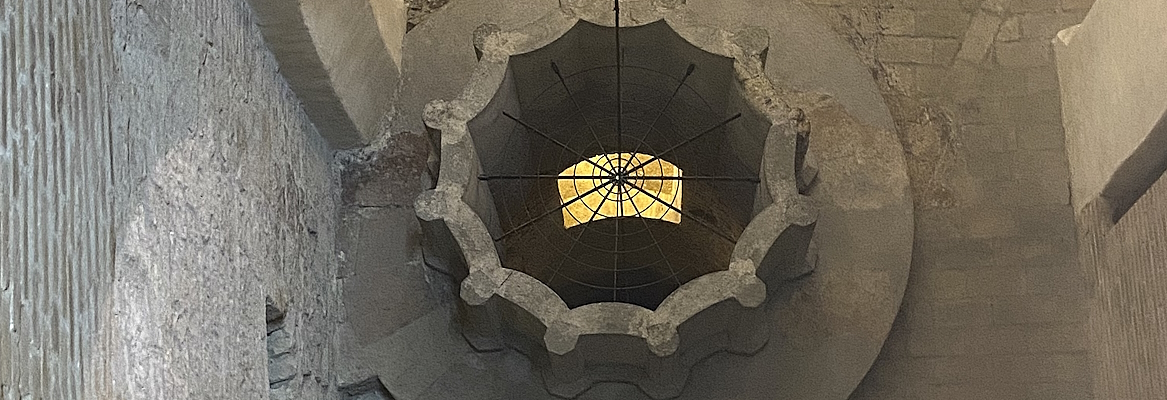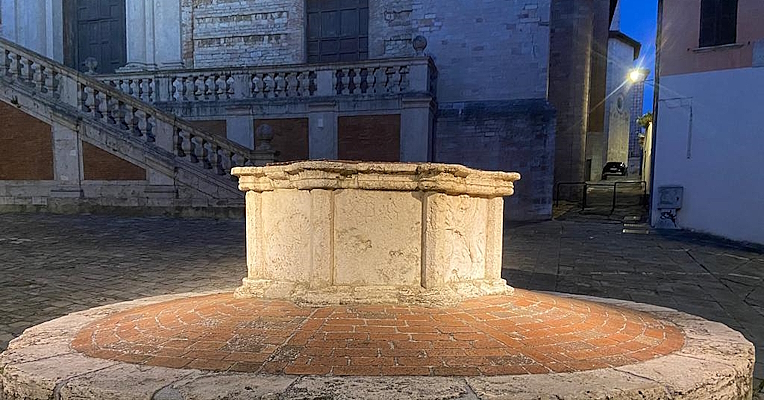Discover Umbria through its mysterious wells.
From Paciano to Bevagna, let yourself be enchanted by the legends and secrets hidden in their deep waters.


Discover Umbria through its mysterious wells.
From Paciano to Bevagna, let yourself be enchanted by the legends and secrets hidden in their deep waters.

Well of San Domenico - Perugia
In front of the Basilica of San Domenico in Perugia, there is a Renaissance well. Did you know that you are right on one of the roads leading to St. Peter's in Rome, and that in ancient times, pilgrims stopped by this church? Someone wanted to tell us about it by sculpting a seashell, a symbol of pilgrimage, on the well.

Well of Palazzo Trinci - Foligno
It is a Renaissance well, but it appears to be designed by the mind of Escher. It is not excluded that it may have been a source of inspiration: the famous Dutch artist, in fact, moved to Italy from 1923 to 1935 to complete his training. During those years, he also spent some time in Umbria. The well of Palazzo Trinci, with its apparent visionary geometry, seems to confuse the planes and the arrangement of spaces, but the marvelous Gothic staircase that surrounds it puts it back in its proper place.

Cloister of the Convent of Santi Domenico and Giacomo – Bevagna
Inside the Convent of Santi Domenico and Giacomo, a 17th-century well tells us an ancient story: right there, Blessed Giacomo drew water three times and, by blessing it, turned it into wine. If you want to see how, look at the frescoes on the walls of the cloister.

Well of the Church of Madonna del Pozzo - Spoleto
Along the ancient Via Flaminia, near the Porta di Monterone in Spoleto, there is a small chapel that houses a narrow, deep, and seemingly miraculous well. The vein of sulfurous water that feeds it was considered healing and miraculous. The church is now a tiny museum called "Opus & Light," where contemporary art exhibitions are organized.

Well of Cava - Orvieto
In 1527, Pope Clement VII, who had taken refuge in Orvieto during the Sack of Rome, ordered the construction of a well in the Cava district. The well was built by enlarging one of Etruscan origin, dug into the tuff between the 4th and 5th centuries BC, to reach the spring at a depth of 36 meters. Currently, the well is part of a larger archaeological complex. It is just one stop on an underground journey through Etruscan, medieval, and Renaissance findings.

Fountain of Piazza Umberto I - Panicale
Is it a fountain or a disguised ancient cistern in the square of Panicale? Let's look for some clues. Approach and look along the edges of the true hexagon: what do you notice? How many grooves! They were left by the strong chains that allowed pulling up buckets full of water. The ancient 15th-century cistern was built to ensure the water supply of the entire village. In 1903, it was transformed into a fountain, which is now the protagonist of the square.

What do you want to ask me?